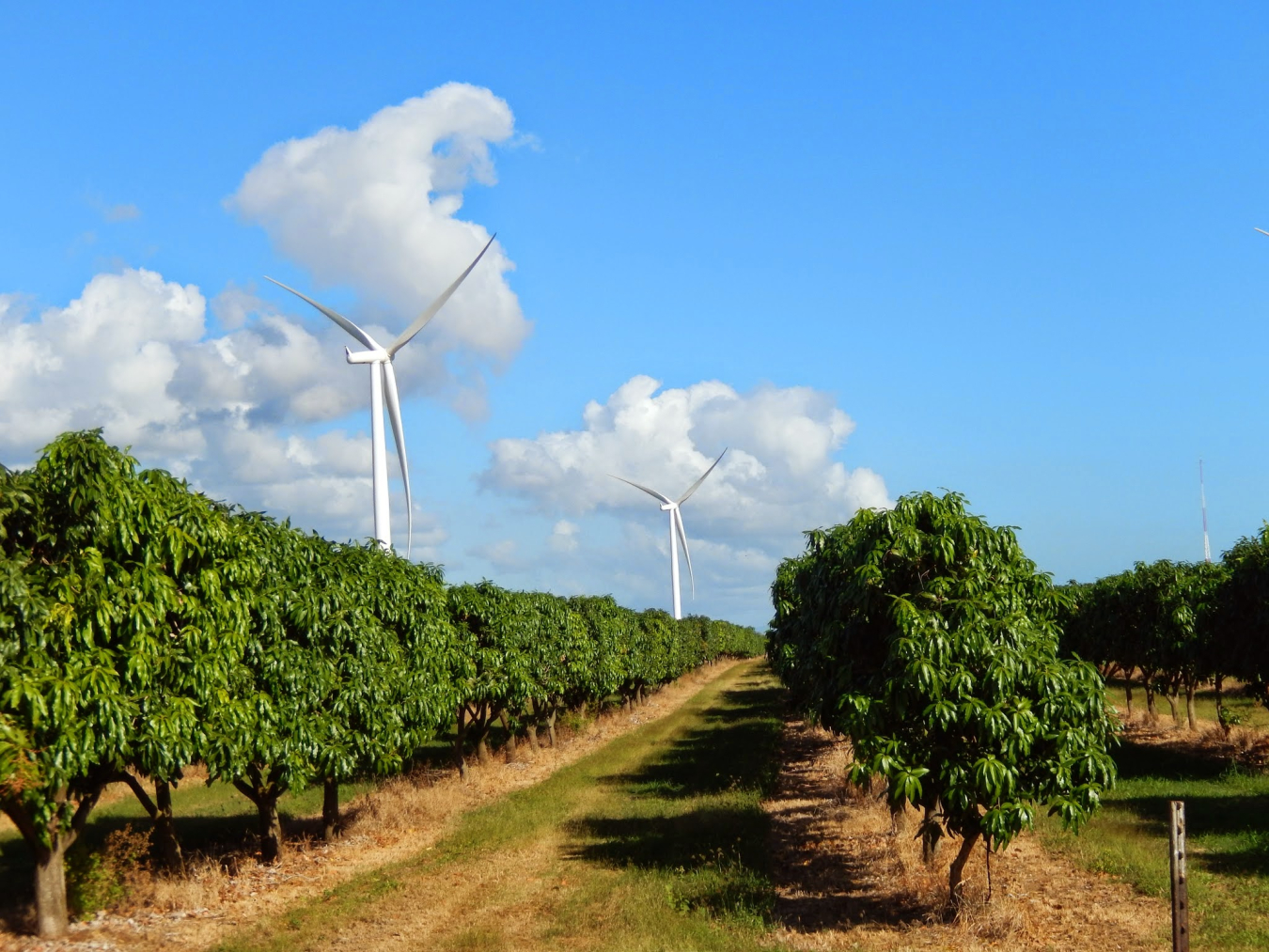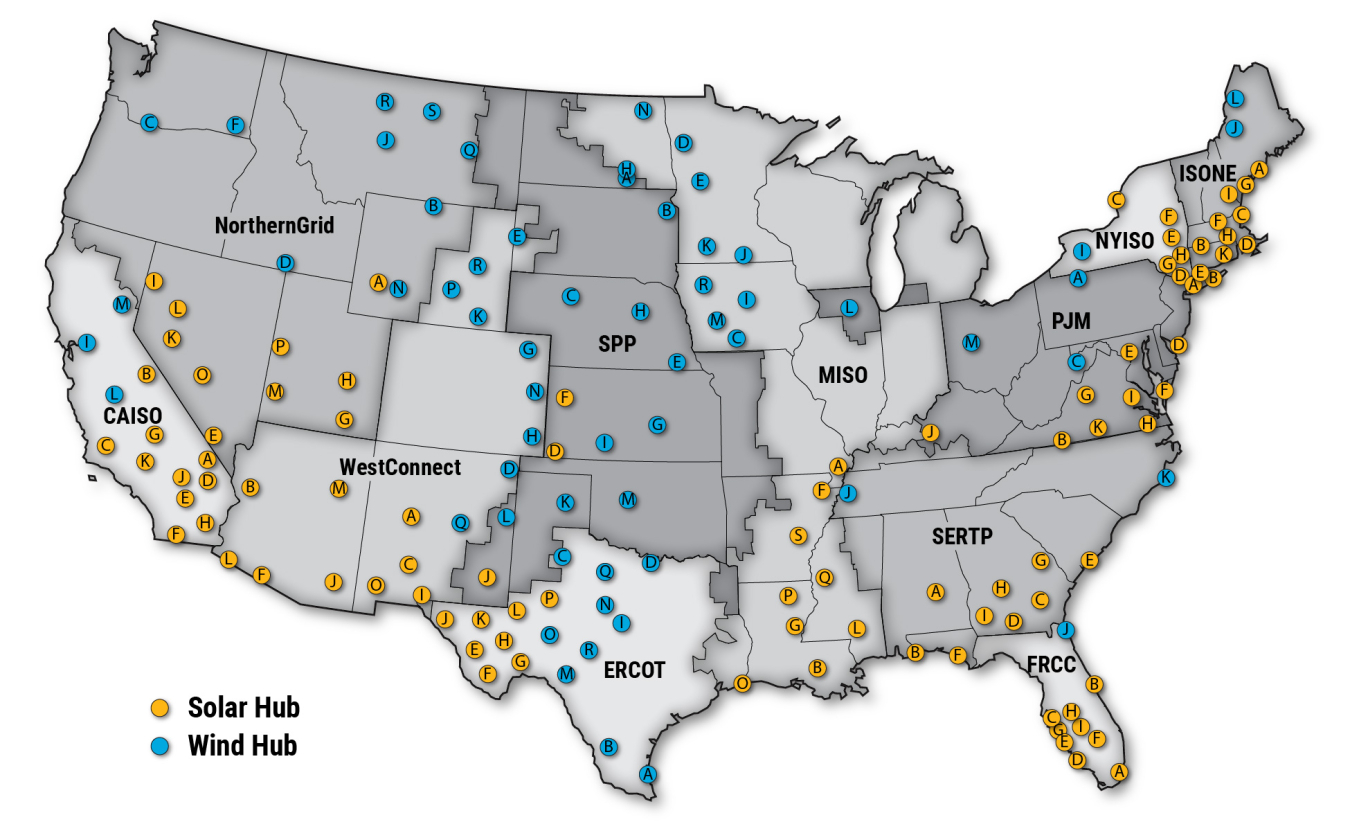The Renewable Energy Potential model can help identify optimal regions for wind plants based on factors like wind resources, land use, topography, and community preferences. It has revealed pathways to Puerto Rico’s clean energy goals.
Wind Energy Technologies Office
October 24, 2023Wind power plants are a common sight for anyone who has driven along the Colorado-Wyoming border, across the Texas prairie, or through California’s rolling hills. In fact, as of 2022, the United States boasted over 144,000 megawatts of land-based wind energy capacity, and wind energy provided enough energy to power more than 43 million households.
However, as common as wind plants may be, planning for future energy scenarios with continued expansion of wind energy development is no easy task. Wind energy researchers, planners, project developers, and states interested in wind energy need to find sites that offer:
- Sufficient, consistent wind resources
- Minimal conflicts with community preferences, residential areas, and wildlife habitats
- Grid connection and transmission infrastructure
- A favorable ratio of construction, operation, and maintenance costs to potential revenue generated.
The Renewable Energy Potential (reV) model, developed by the National Renewable Energy Laboratory (NREL) with funding from the U.S. Department of Energy’s (DOE) Wind Energy Technologies Office and Solar Energy Technologies Office, can help in this task by characterizing the ability of sites across the United States to serve these and more planning needs. More specifically, this open-source research and modeling assessment tool allows users to explore regional and statewide renewable energy supply possibilities, identify options for connecting those energy sources to the grid, and evaluate how much those solutions can cost. The research ingenuity and practical applications of the reV model earned the tool a prestigious R&D 100 Award.
“The reV model fundamentally addresses the challenge of renewable energy scenario planning,” said NREL researcher Katy Waechter, who coordinates the reV project. “This includes siting for energy-generating technologies, optimizing regional interconnection and grid reliability, and broader grid planning.”
Designed for utility planners, regional and national agencies, project and land developers, and researchers, reV supports modeling of land-based and offshore wind energy, solar photovoltaic and concentrating solar power, and geothermal energy. It can model areas ranging from a single site to an entire continent and in time intervals ranging from 5 minutes to hourly, spanning a single year or multiple decades.
If, for example, a state or community wants to plan for wind farms, the reV tool can help identify the best locations for wind energy development in their region, accounting for the region’s wind resources, how the land is used, the area’s topography, and critical wildlife habitats. Once reV has generated a model, it calculates the total energy generation potential, system costs, and levelized cost of energy.
“What I think is so special about reV is it allows us to take our renewable energy calculations and use them to represent real places,” said Waechter. “Essentially, reV helps us integrate the theoretical and the applied world.”
To date, there have been multiple real-world applications of the reV tool. The first focuses on helping Puerto Rico meet its clean energy goals. The second focuses on identifying areas throughout the continental United States with a high potential for low-cost renewable energy development.
Lighting a Path to Puerto Rico’s Clean Energy Future
To help Puerto Rico achieve 100% clean energy by 2050, DOE launched the Puerto Rico Grid Resilience and Transitions to 100% Renewable Energy Study (PR100), a 2-year study by DOE's Grid Deployment Office and six national laboratories to analyze stakeholder-driven pathways to Puerto Rico’s clean energy future.
In support of this study, a team of researchers from NREL used the reV tool to model the region’s wind and solar energy potential. Because of the territory’s abundant solar resources, land constraints, and generally low wind speeds, most of Puerto Rico’s plans focused on solar energy. However, reV revealed that both land-based and offshore wind offer viable, low-cost options for helping Puerto Rico meet its energy needs. In particular, modeling based on reV showed that wind energy can complement solar in two important ways: by providing power when the sun goes down and electricity demand peaks, and by teaming up with solar to form hybrid plants to provide energy options that accommodate the territory’s land constraints. These results indicate that Puerto Rico can not only meet its clean energy goals, but also become more energy independent and lower residents’ electricity bills.

Mapping Wind Energy Hubs for a Greener U.S. Grid
As one of the first steps in its Building a Better Grid Initiative, DOE is conducting the National Transmission Planning Study, which aims to identify electrical transmission that will provide broad-scale benefits to electric customers, inform regional and interregional transmission planning processes, and develop strategies to accelerate the decarbonization of the nation’s grid while maintaining a reliable electrical system.
In support of the National Transmission Planning Study, another team of NREL researchers used reV to identify interregional renewable energy zones (IREZs)—areas with high potential for low-cost renewable energy development—throughout the continental United States. With reV’s help, the team identified 155 preliminary locations that have the potential to become IREZs that export wind and solar energy to interregional load centers. Of those 155 preliminary locations, 61 have a high concentration of wind resources and most are in the midwestern region of the continental United States. By showing where competitive wind and solar energy are available, and how concentrated these resources are, these findings highlight the potential for exporting regionally abundant, low-cost renewable energy to other areas in the United States, which can help enhance the resilience and affordability of the U.S. power grid.

Future Enhancements and Impact
Looking to the future, reV will continue to expand its capabilities to represent renewable energy technologies like hydrogen; agrivoltaics (land used for agricultural production under and/or between rows of solar panels; advanced transmission modeling; and routing export cables from offshore wind plants to grid interconnection points onshore.
On the data front, reV is scaling up from site-level studies of hydrogen production for green steel (used in wind turbines) to the continental United States and helping to create a dataset that maps potential rooftop solar panel locations across the country.
On the policy front, reV is providing data and analysis to support the White House and federal land managers revising guidelines for siting renewables on federal lands.
Finally, at the international level, reV continues to support energy transition efforts with work modeling renewable energy supply in Indonesia, India, Colombia, and Lithuania.

